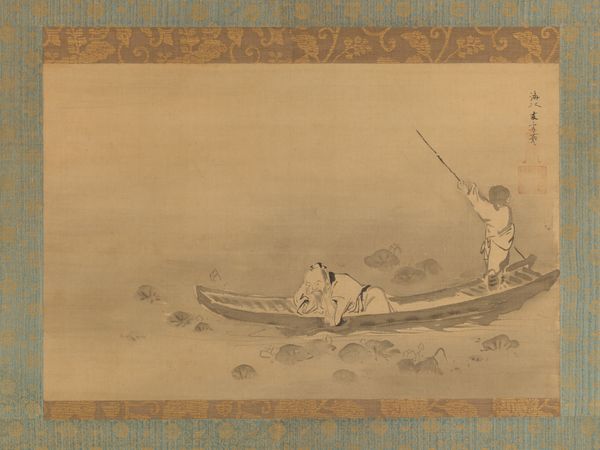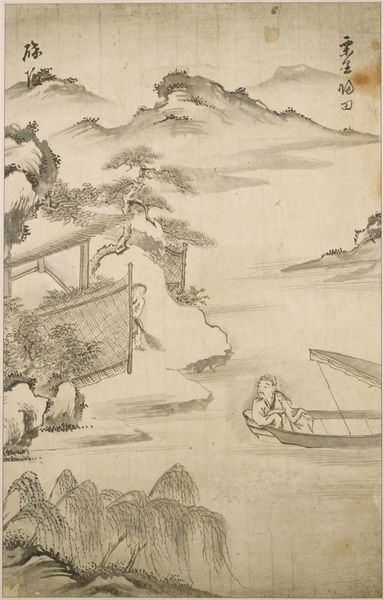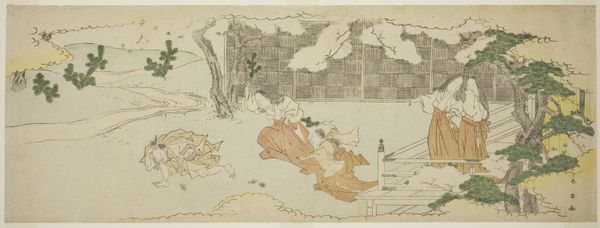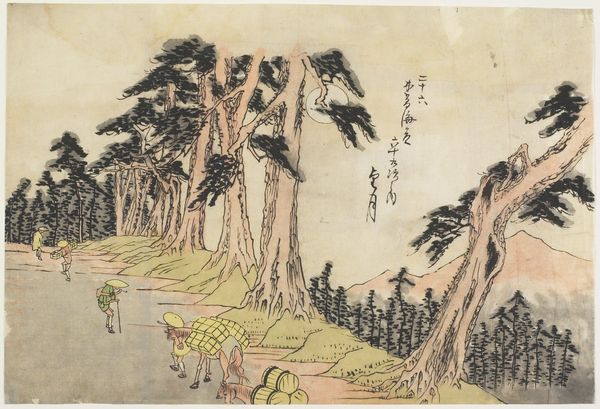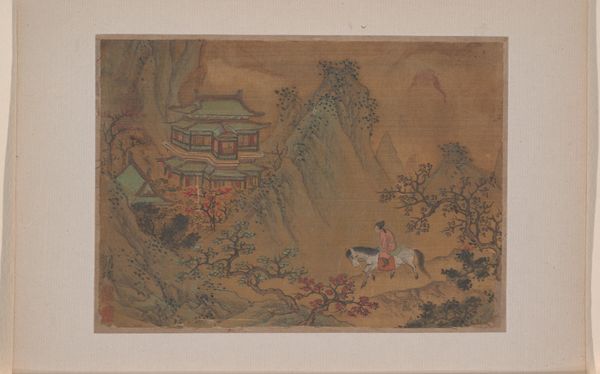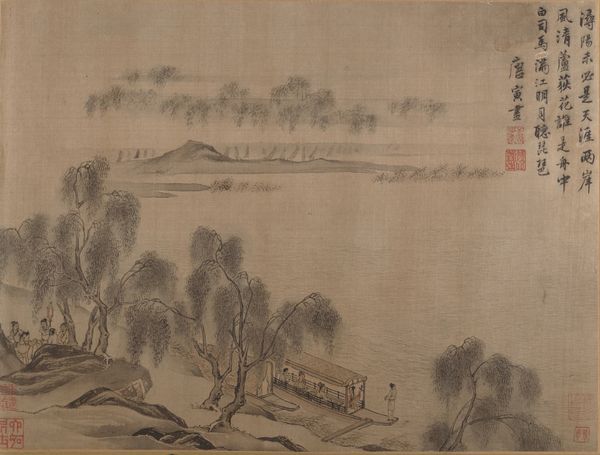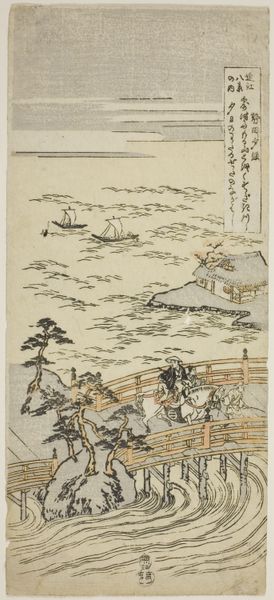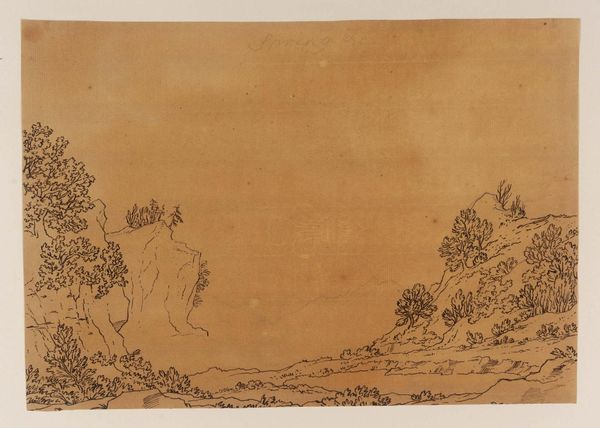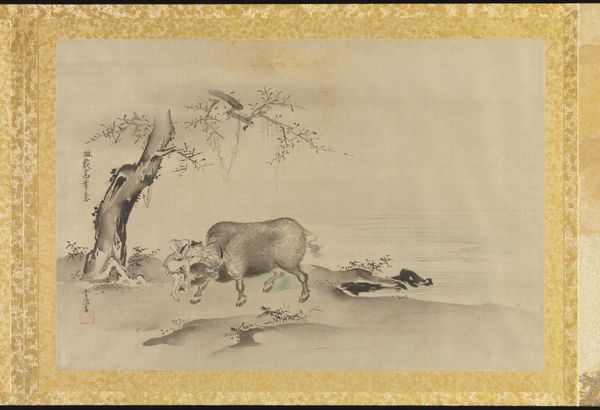
painting, watercolor
#
narrative-art
#
painting
#
asian-art
#
landscape
#
figuration
#
watercolor
#
orientalism
Dimensions: 9 1/2 x 11 1/2 in. (24.1 x 29.2 cm)
Copyright: Public Domain
Editor: So, this watercolor painting on silk is titled "Water Buffalo," and it's an anonymous piece from sometime during the Qing Dynasty. It feels very pastoral, and the muted colors give it an almost dreamlike quality. How do you interpret this work, especially considering its materials? Curator: It’s intriguing how the artist uses watercolor on silk, media traditionally associated with refinement and high art, to depict such a common, almost quotidian scene of rural labor. The water buffalo becomes the central tool of production here. Editor: Tool of production… that's interesting. So, you’re saying that the choice of portraying labor on expensive silk challenges traditional class boundaries? Curator: Precisely! Consider the socio-economic context. Who could afford silk, and what kind of imagery was usually deemed appropriate for it? This image elevates the everyday, bringing the means of sustenance into a realm usually reserved for scholarly landscapes or courtly portraits. Editor: I see what you mean. It’s not just a pretty picture; it's about labor, value, and who gets to be represented in art. Does the repetitive use of color further this argument? Curator: Yes, notice the limited palette. It draws attention to the actual making of the piece. It feels deliberately unembellished, focusing attention on the material conditions of both the represented labor and the art-making process. It begs the question: what are they worth? Editor: So, by focusing on the materials and labor, this painting prompts us to think about the value we place on both art and everyday life. I never would have considered the art in that way, initially! Curator: And hopefully, that’s a perspective you'll carry forward. Always consider how the 'stuff' of art reflects the stuff of life.
Comments
No comments
Be the first to comment and join the conversation on the ultimate creative platform.
